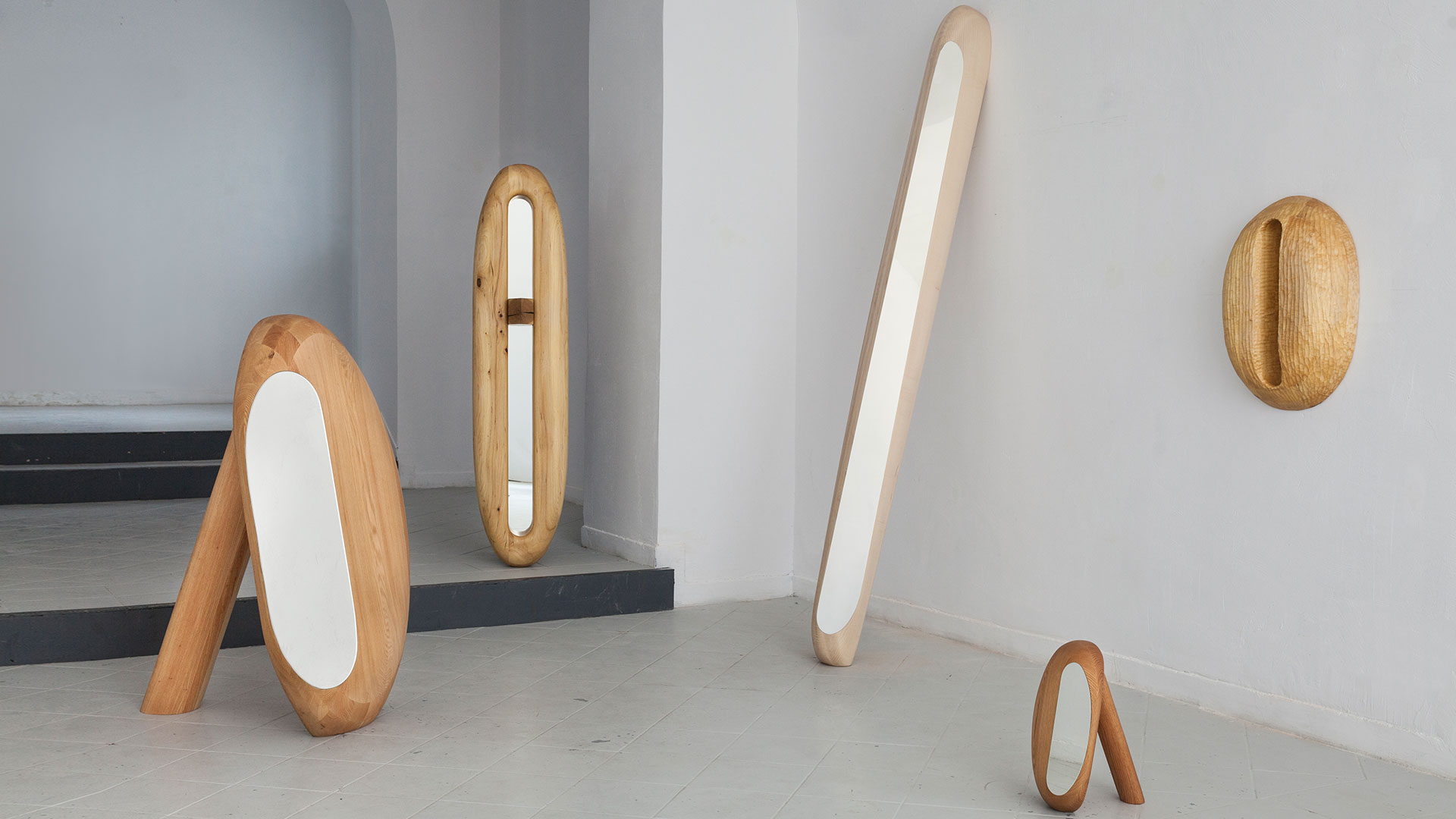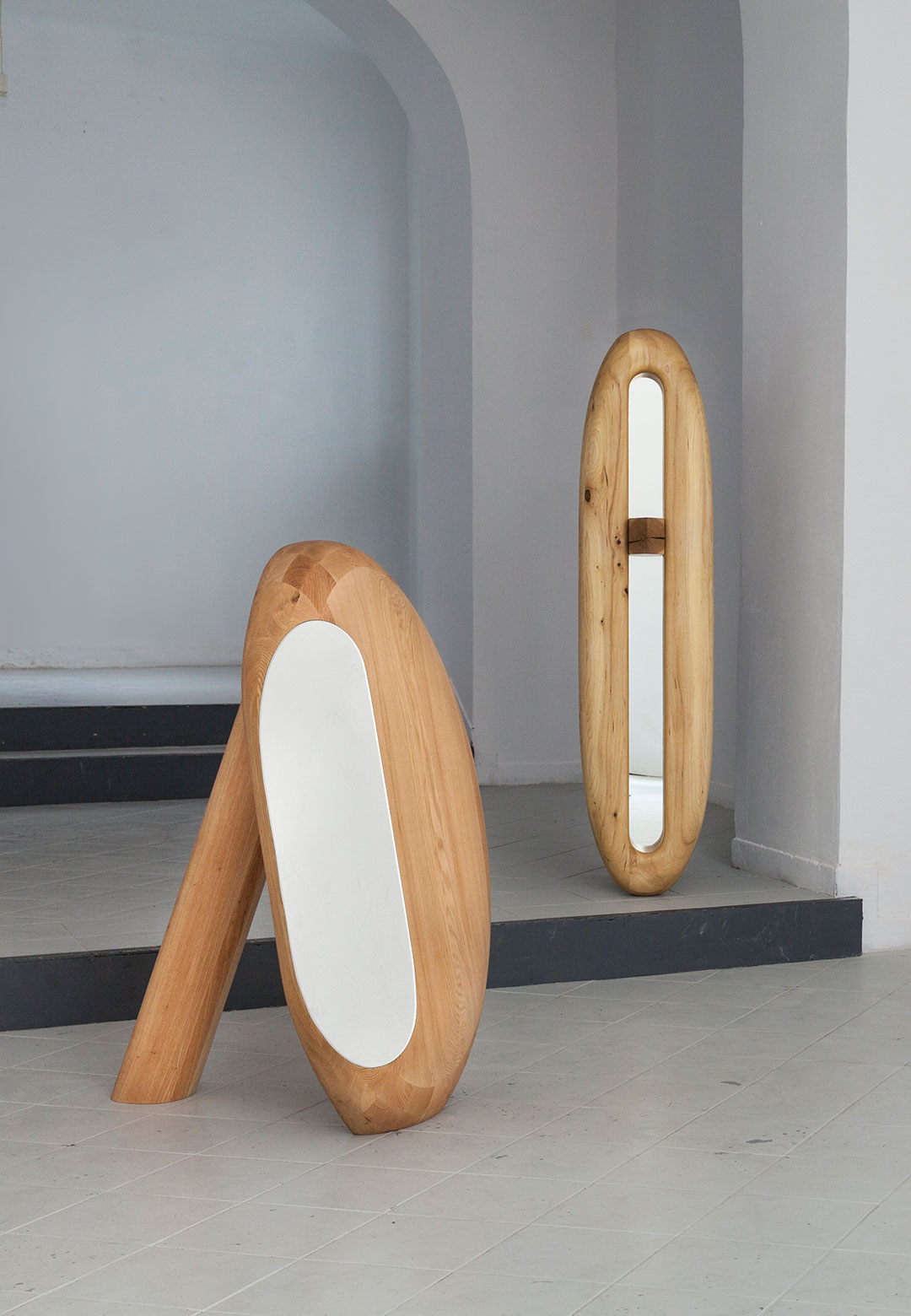What is an object?
Polish philosopher Jolanta Brach-Czaina wrote, “The object is what exists and what is perceived. Its status is defined by being and being observed. Not everything is an object, only those things that are able to influence us and draw our attention. We do not invent objects; we only happen to encounter them. They come to us from the outside and demand that we listen. A fragment we are able to customise and impose upon the world; an object imposes something on us.” This explanation of ‘what an object is’ and ‘what an object could be,’ guided Polish artist and maker Anna Bera to pursue a collection that redefines the meaning of ‘object.' With wood as her main medium of creation, Bera has been creating unique objects and functional art, crafted by hand since 2014. Her works are inspired by her observations of the relationship between humans and nature—from a biological, spiritual and cultural perspective. Borrowing from her experiences with the same and her philosophical reinvention of the objects, Bera shaped her latest collection and named it ‘OBJECT.’
“With the collection, I wanted to achieve the feeling of the obviousness of existence, like Roquentin in Sartre’s ‘Nausea’ suddenly feels the weight of objects around him or even the weight of existence of objects, their physicality and tangibility. In that moment he realises the nature of reality, he feels nausea for the first time and says ‘Now I knew that things are just what they seem— and beyond that… there is nothing,” narrates Bera.
The collection comprises a series of wood sculptures of collectable design objects that can also function as mirrors. On the monumental and heavy form, Bera glues on narrow mirror panes, which encourages the objects to become decorative mirrors. However, due to the scale and proportion between the two materials—wood and mirror—they never completely adorn the identity of either a frame or a mirror. The first objects of the collection are N.1 and N.2, which are massive frames with the mirror pressed into a small hole, like an opening resembling a keyhole. While moving beyond the monumentality of the object has no justification, Bera wanted to create an impression of insecurity which gave rise to mirror N.24.
Bera further narrates, “In my collection, the object forces the user to interact with it, it is not here to serve us, it has its own reason to exist apart from whether it is useful or not. In this project, I play with the form of a utility object. The mirror is either squeezed inside a massive frame or glued outside causing the frame's function to be degraded. In some ways, the design contradicts and renders the function inoperable. The user has to walk around the object to find the right position where he or she can look in the mirror. The object has its own personality, it is even inconvenient to use. It is rather demanding to be understood in order to use it, to give it meaning, function and purpose. In this way, it becomes the OBJECT.”
While the object might appear to be hollow inside, the multidisciplinary artist, woodcarver and carpenter in Bera wanted to keep it solid. From cutting wood, planning very long boards, glueing and even moving the objects around in the studio, the process of creating the objects was a tedious task and physically demanding. Each object is made from a different wood: oak, sycamore, ash, red oak and elm. The newest piece from the collection, mirror N.24, which was recently presented at Collect London, is the first one with a polished steel mirror and not a regular glass mirror.
Bera explains her design philosophy as "an attempt to express the same feeling with a different result every time." For the artist who is obsessed with observing meteorites and rocks, most of her works also reflect that heaviness, indefinite solidity and a form that can’t be confined to a finite shape. Therefore, even when the OBJECTS hold the materiality of wood, it reminds one of the textures of rocks. Mentioning this influence in her works, Bera adds, “Rocks express stability and strength through their physicality, and in many cultures, they were considered sacred. In Poland, we still put stones to mark borders, which is a very old tradition that goes back to ancient Rome. The very definition of the boundary stone in classical Latin as lapis sacer (sacred stone) suggests its connection with the sacred. The Romans dedicated the stones placed on the borders to the god whose name was Border-Terminus."
A few years back Bera wrote: "I think about something potent, explicit, so much so that it’s obscene like it really is. You can touch it. It’s heavy and if it were to fall on me, it would crush me to pulp. I wanted it to be like death; for instance, a stone is like death.
There is a haiku about stone and I think my obsession with rocks, what they mean and how they exist started when I read it for the first time:
For 100 million years, the stone has existed
all that time the sky was either clear or cloudy.”






 Sign in with email
Sign in with email










What do you think?